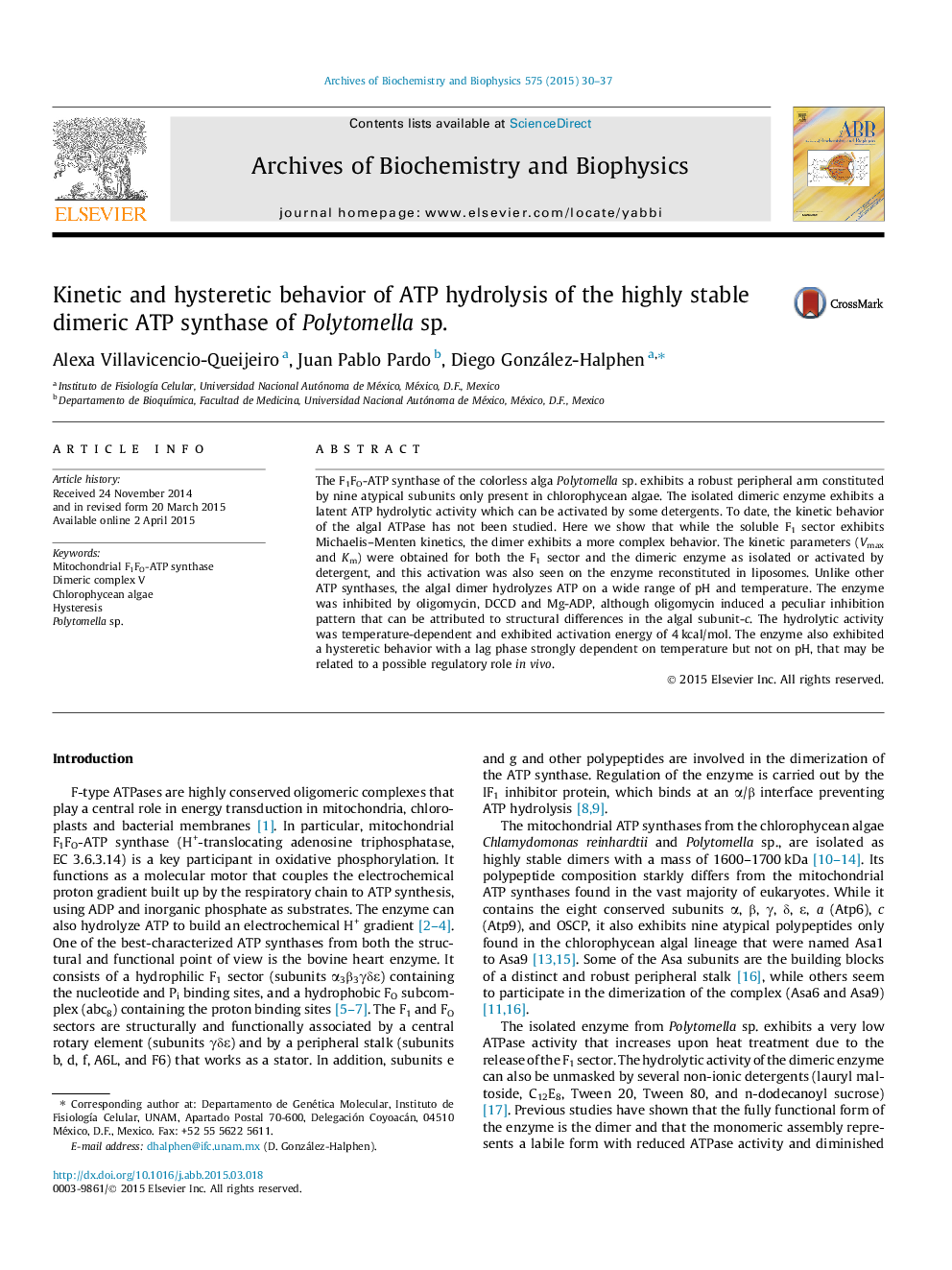| Article ID | Journal | Published Year | Pages | File Type |
|---|---|---|---|---|
| 1924941 | Archives of Biochemistry and Biophysics | 2015 | 8 Pages |
•The F1 sector of the algal ATPase follows Michaelis–Menten kinetics while the dimer does not.•The dimeric ATP synthase can hydrolyze ATP on a wide range of pH and temperatures.•Structural differences in subunit-c cause a peculiar inhibition pattern of oligomycin.•The enzyme displays a hysteretic behavior dependent on temperature but not on pH.
The F1FO-ATP synthase of the colorless alga Polytomella sp. exhibits a robust peripheral arm constituted by nine atypical subunits only present in chlorophycean algae. The isolated dimeric enzyme exhibits a latent ATP hydrolytic activity which can be activated by some detergents. To date, the kinetic behavior of the algal ATPase has not been studied. Here we show that while the soluble F1 sector exhibits Michaelis–Menten kinetics, the dimer exhibits a more complex behavior. The kinetic parameters (Vmax and Km) were obtained for both the F1 sector and the dimeric enzyme as isolated or activated by detergent, and this activation was also seen on the enzyme reconstituted in liposomes. Unlike other ATP synthases, the algal dimer hydrolyzes ATP on a wide range of pH and temperature. The enzyme was inhibited by oligomycin, DCCD and Mg-ADP, although oligomycin induced a peculiar inhibition pattern that can be attributed to structural differences in the algal subunit-c. The hydrolytic activity was temperature-dependent and exhibited activation energy of 4 kcal/mol. The enzyme also exhibited a hysteretic behavior with a lag phase strongly dependent on temperature but not on pH, that may be related to a possible regulatory role in vivo.
